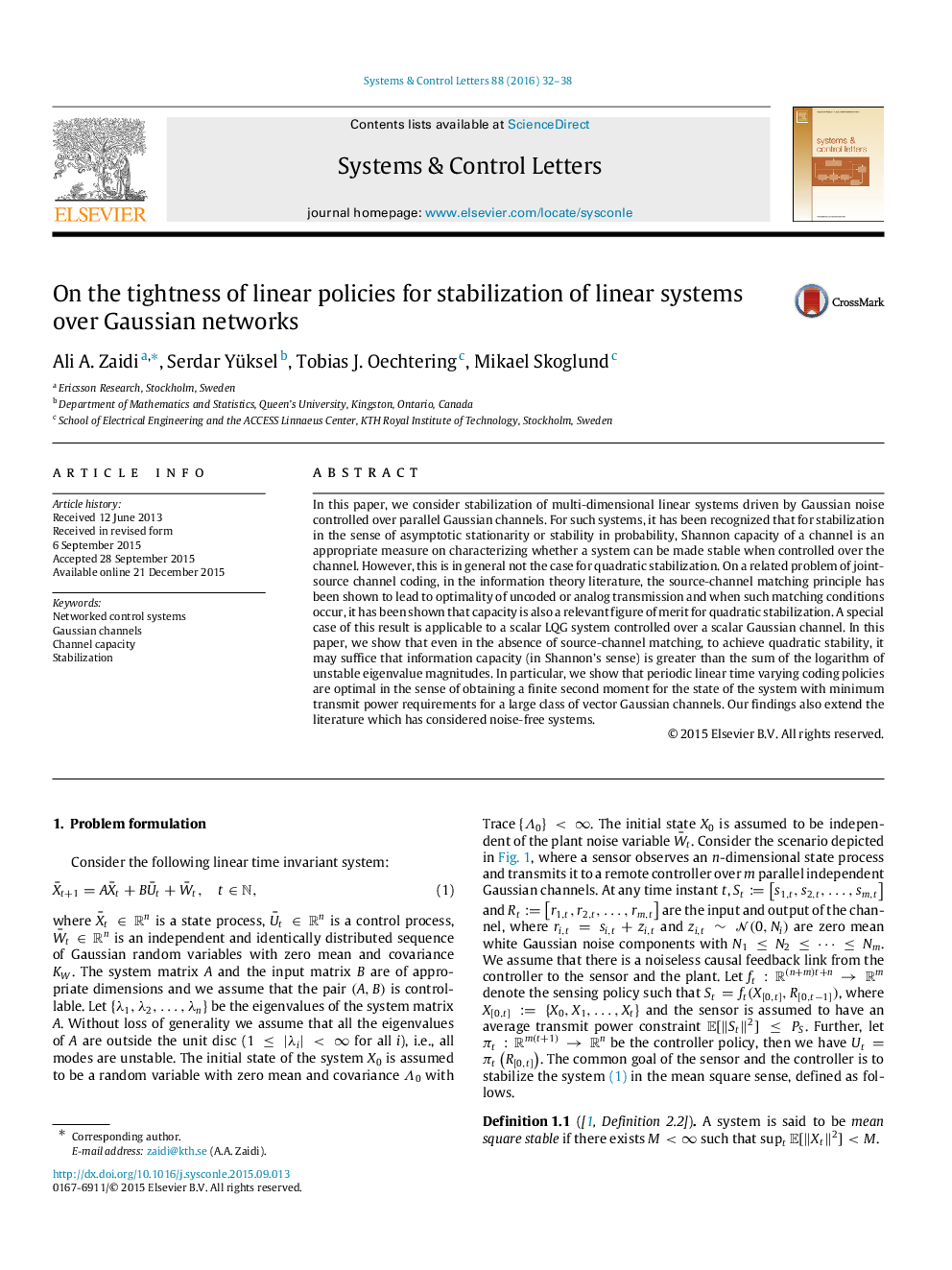| Article ID | Journal | Published Year | Pages | File Type |
|---|---|---|---|---|
| 751896 | Systems & Control Letters | 2016 | 7 Pages |
In this paper, we consider stabilization of multi-dimensional linear systems driven by Gaussian noise controlled over parallel Gaussian channels. For such systems, it has been recognized that for stabilization in the sense of asymptotic stationarity or stability in probability, Shannon capacity of a channel is an appropriate measure on characterizing whether a system can be made stable when controlled over the channel. However, this is in general not the case for quadratic stabilization. On a related problem of joint-source channel coding, in the information theory literature, the source-channel matching principle has been shown to lead to optimality of uncoded or analog transmission and when such matching conditions occur, it has been shown that capacity is also a relevant figure of merit for quadratic stabilization. A special case of this result is applicable to a scalar LQG system controlled over a scalar Gaussian channel. In this paper, we show that even in the absence of source-channel matching, to achieve quadratic stability, it may suffice that information capacity (in Shannon’s sense) is greater than the sum of the logarithm of unstable eigenvalue magnitudes. In particular, we show that periodic linear time varying coding policies are optimal in the sense of obtaining a finite second moment for the state of the system with minimum transmit power requirements for a large class of vector Gaussian channels. Our findings also extend the literature which has considered noise-free systems.
